The Sky at Night - Season 54 / Year 2010

Season 54 / Year 2010

Episodes

Twinkle Twinkle
January provides the perfect opportunity to observe stars, planets and galaxies.
Sir Patrick Moore takes us on a tour of the winter sky, looking at twinkling 'variable stars' with Dr John Mason, and at planets and galaxies with Pete Lawrence and Paul Abel.
Sir Patrick and Dr Chris Lintott also point out the best objects to observe if you've had a telescope for Christmas.
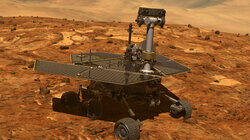
The Spirit of Mars
Mars is the brightest thing in the sky and is at its closest to Earth for the next four years. With NASA announcing that its Martian rover Spirit is to rove no more on the red planet, there is an interview with Prof Steve Squyres, the principal investigator of the Mars Exploration Rover Mission, about the attempts to get it out of the sand dune which ensnared it in May 2009 and the agonising decision to stop the rescue.
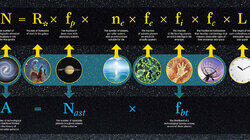
Life
Half a century ago, scientists were speculating about the possibility of planets outside our solar system. Since then over 400 such extra-solar planets have been discovered. Is there anything living on them and if so, is it intelligent? Sir Patrick Moore debates the question of life in the universe with today's planet hunters and astrobiologists, while at the Royal Society Dr Chris Lintott searches for evidence of alien life.
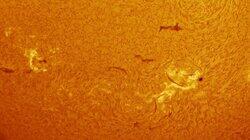
The Sun in Splendour
We can never see our nearest star at night, only by day. Looking at it directly will blind us - because our nearest star is the Sun. Sir Patrick Moore is joined by the Astronomer Royal for Scotland, Professor John Brown and by Dr Chris Davis. They take us on a tour of the Sun, Earth's primary source of energy and without which life would not exist. Pete Lawrence and Paul Abel demonstrate safe ways to look at the Sun from Sir Patrick's observatory in Sussex.

Ring World
Saturn is one of the largest planets and the beautiful system of rings surrounding it makes it the most distinctive in the solar system. But how were the rings formed and what effect do Saturn's many moons have upon them? Sir Patrick Moore is joined by Professor Michele Dougherty and Professor Carl Murray, while Pete Lawrence and Paul Abel demonstrate the best way to observe Saturn during May.

Star Birth
The many star-forming areas of our galaxy are obscured by interstellar dust, but Herschel, a new space telescope, can see these areas in infrared light. Sir Patrick Moore is joined by Professor Derek Ward-Thompson and Dr Chris North to examine the latest stunning images from Herschel.
Pete Lawrence shows what is on offer in the June sky and Paul Abel searches for a comet - but will he find it?

The Universe from Atlantis
The Space Shuttle Atlantis has returned from its final flight to the International Space Station. With the shuttle fleet soon to be decommissioned, Sir Patrick Moore and Dr Chris Lintott meet the crew of Atlantis to talk about the future of spaceflight, the legacy of the Space Shuttle - and how to prepare to go into space.
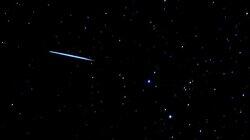
Monster Star
Astronomers based in the UK have discovered the brightest and most massive star to date. But how did it get so big? Sir Patrick Moore and Chris Lintott are joined by one of the team who discovered the star, Dr Richard Parker.
August also sees one of the most spectacular meteor showers of the year, and Pete Lawrence and Paul Abel explain the best way of observing the Perseids.
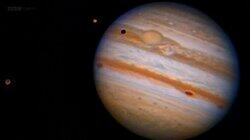
Events on Jupiter
In July 2009 a large object crashed into Jupiter, and in May 2010 one of the most prominent features of the planet, the southern equatorial belt, disappeared. But where did it go? Sir Patrick Moore is joined by Dr John Rogers and Dr Leigh Fletcher to discuss the latest events on Jupiter. Pete Lawrence and Paul Abel observe the planet and explain what features can be seen through a telescope.
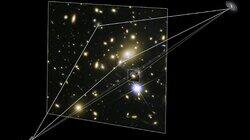
Light Echoes
Light echoes are reflections of light from distant objects in space. But what do they look like and how can they best be seen? Sir Patrick Moore and his guests Professor Mike Bode and Dr Tim O'Brien explain all. Chris Lintott helps to construct a new radio telescope in Hampshire, while Pete Lawrence and Paul Abel preview what is on view in the October skies.
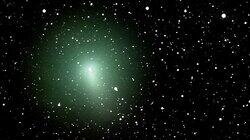
Ghostly Travellers
Comets are strange and exotic objects, the remnants from dead stars and the birth pangs of our solar system. Only a handful of these ghostly, celestial objects have been seen at close quarters. Sir Patrick Moore discusses NASA's EPOXI mission, which hopes to rendezvous with comet Hartley 2.
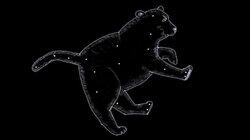
The Great Bear
Ursa Major, the Great Bear, is a rich source of galaxies, double and variable stars and the Hubble Deep Field, through which we are able to look back 10 billion years in time. Sir Patrick Moore and his astronomical team give an intimate guide to one of the skies' most recognisable constellations.
Recently Updated Shows

The Creep Tapes
Based on a collection of videotapes in the secret vault of the world's deadliest and most socially uncomfortable serial killer, who hires his victims to film him for the day under false pretenses, each episode exposes a new victim from one of the fabled 'Creep Tapes'.

America's Funniest Home Videos
ABC's longest-running primetime entertainment show, America's Funniest Home Videos, returns for season 36 this fall with the same mission -- giving families something genuinely funny to enjoy together on Sunday nights.
"AFV," the longest-running primetime entertainment show in ABC history, returns for season 36 with the same mission - to provide viewers with hysterical moments that fly by at a dizzying pace.

The Real Housewives of Potomac
Just up the river from our nation's capital lies a hidden gem—Potomac, Maryland. Its rolling hills, gated mansions, sophisticated prep schools, and exclusive country clubs all serve to keep the area invitation-only. Sprinkled throughout this community are a handful of old-line, wealthy African-American families who have historically broken racial barriers to provide a life of privilege for their children. The Real Housewives of Potomac follows the upscale lives of six intriguing, well-to-do women: Gizelle Bryant, Katie Rost, Karen Huger, Charrisse Jackson-Jordan, Robyn Dixon, and Ashley Darby, all of whom have fought for their places in this society by way of legacy or marriage. In a town where entry is granted only through class, pedigree, and lineage, how far will these ladies go to secure their spot at the top of this prestigious circle?

The Traitors Canada
Follow a group of contestants – including some familiar faces – who live together as they complete a series of challenges with the goal of earning a cash prize. The catch? Some of the contestants are traitors who will attempt to deceive and manipulate their way to the prize instead of sharing it amongst the group. In this psychological adventure will the traitors be unmasked in time?
